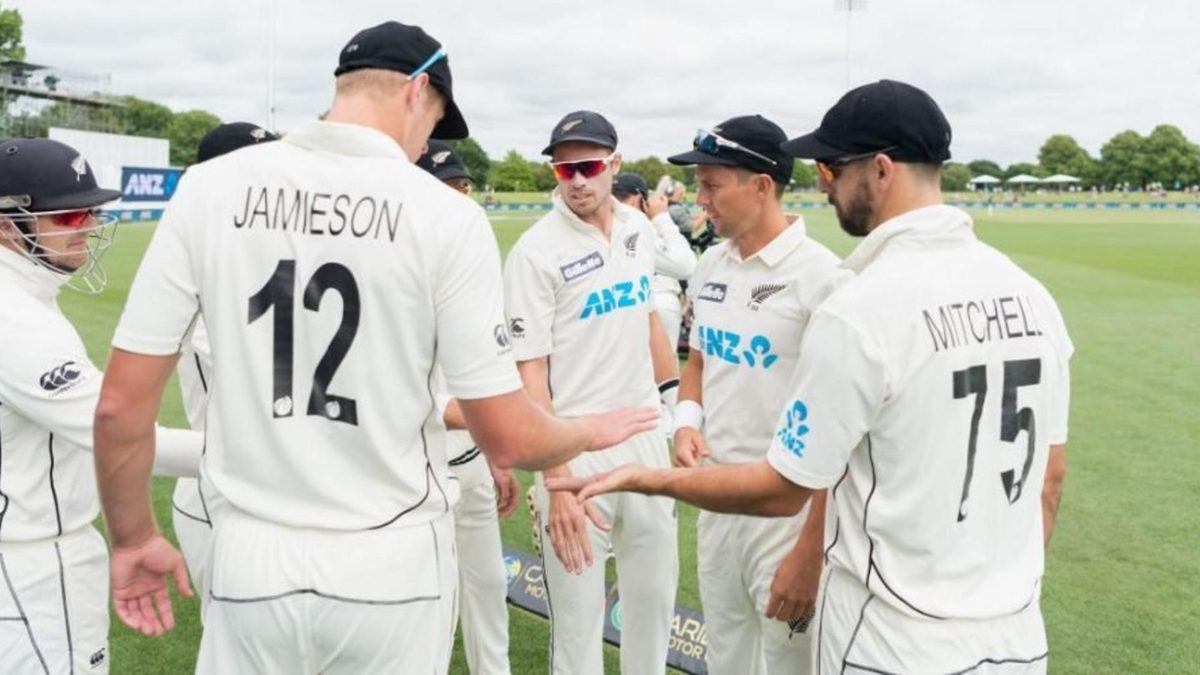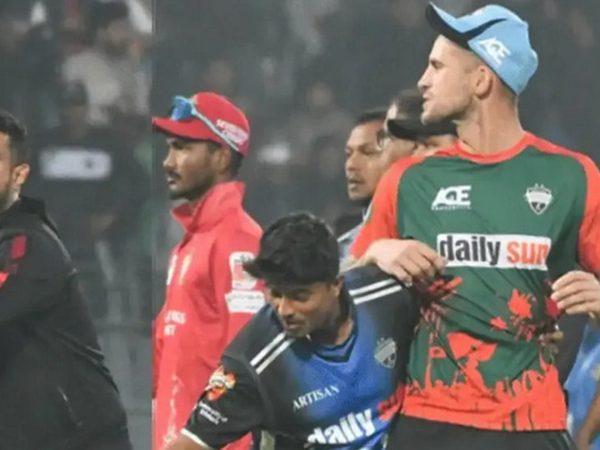
A quartet of fast bowlers playing Test cricket together is a rare sight; it was the ‘Invincible’ Windies side of the 1970s, that made the term a super hit.
Subscribe to the Wisden Cricket YouTube channel for post-match awards, player interviews, analysis and much more.
Since 2000, four quicks in a team haven’t been a common sight, although we still have some great names lining up for teams in this century. The New Zealand quicks – Tim Southee, Trent Boult, Neil Wagner and Kyle Jamieson – are the latest to join the bandwagon. Here’s rating them and the other seam bowling quartets from this century in Tests.
South Africa
Dale Steyn, Morne Morkel, Vernon Philander, Jacques Kallis
Matches: 18, Won: 12, Lost: 2, Draw: 4
Individual averages – Philander: 17.72, Steyn: 22.72, Morkel: 33.00, Kallis: 41.47
South Africa dominated the first half of the last decade with three sensational seamers, who could run through attacks, and Kallis, who aged like fine wine. While Philander, basking in glory in the early half of his career, was the standout bowler, Steyn was in his prime years and Morkel the enforcer who could soften up teams. They destroyed teams with this bowling attack: the team boasted a bowling average of 27.1 when fielding the four together.
Rating – 9/10
Allan Donald, Shaun Pollock, Makhaya Ntini, Jacques Kallis
Matches: 9, Won: 6, Lost: 1, Draw: 2
Individual averages – Donald: 22.21, Ntini: 24.17, Pollock: 32.58, Kallis: 24.35
Allan Donald, Makhaya Ntini and Shaun Pollock in their prime were a brilliant combination complemented perfectly by Kallis, who had pace, swing and the vigour to stand up to each of the other three. They only played nine matches together, but it was evident South Africa wished they could have had more matches with the four playing in tandem.
Rating – 8/10
[breakout id=”0″][/breakout]
Australia
Mitchell Johnson, Ryan Harris, Peter Siddle, Shane Watson
Matches: 9, Won: 7, Lost: 2, Draw: 0
Individual averages – Johnson: 18.22, Harris: 22.32, Siddle – 25.69, Watson – 26.22
In four years of playing together, this quartet produced a team bowling average of 24.51 and bulldozed teams with a combination of pace, movement, bounce and relentlessness. Johnson led the intimidation with Harris and Siddle aiding in running through batting line-ups. Watson chipped in during the carnage as the fourth seamer, averaging a miserly 26.22. It’s fair to say that they set the benchmark for bowling quarters in the century.
Rating – 9.5/10
England
James Anderson, Stuart Broad, Ben Stokes, Mark Wood
Matches: 11, Won: 4, Lost: 5, Draw: 2
Individual record – Broad: 29.30, Anderson: 27.55, Wood: 38.83, Stokes: 47.68
Jofra Archer instead of Wood makes up another quartet for England in recent times, but that combination has played just four matches together. Mark Wood and Stokes haven’t quite stepped up together and Broad and Anderson have good, yet not great, averages in this quarter. With Sam Curran, Archer and Chris Woakes around the Test team, it is likely that England have already a few better quartets to field in the next few years.
Rating – 6/10
West Indies
Kemar Roach, Shannon Gabriel, Jason Holder, Alzarri Joseph
Matches: 7, Won: 3, Lost: 2, Draw: 2
Individual record – Roach: 23.06, Holder: 23.13, Gabriel: 35.05, Joseph: 39.86
Often underrated because of the team’s performances, West Indies’ resurgence can partly be credited to a remarkable pace attack they have managed to put together in the last few years. Roach and Gabriel have been at the forefront of this revolution under the leadership of Holder and Joseph, over the last two years, has become a more than handy fourth cog in the attack, adding pace, zip and youthful vibe. Their combined average is impressive, even more so that they have managed to lift a team that was still lacking on the batting front.
Rating – 8/10
New Zealand
Trent Boult, Tim Southee, Kyle Jamieson, Neil Wagner
Matches: 4, Won: 4, Lost: 0, Draw: 0
Individual record – Jamieson: 13.19, Southee: 19.09, Boult: 32.20, Wagner: 22.2
They have only played four matches together till date – all of them at home in New Zealand – but it’s evident that the Blackcaps have uncovered an attack that could be the highlight of their Test team for at least the next couple of years. Kyle Jamieson’s height and fuller lengths complement the Boult-Southee pairing, with Wagner being the special workhorse capable of bowling long spells and hitting the hard lengths. On paper, they are destructive and have lived up to the billing on the field so far. Outside home, they will have a baptism by fire as they prepare for a showdown against India in the World Test Championship final.
Rating – 9/10








